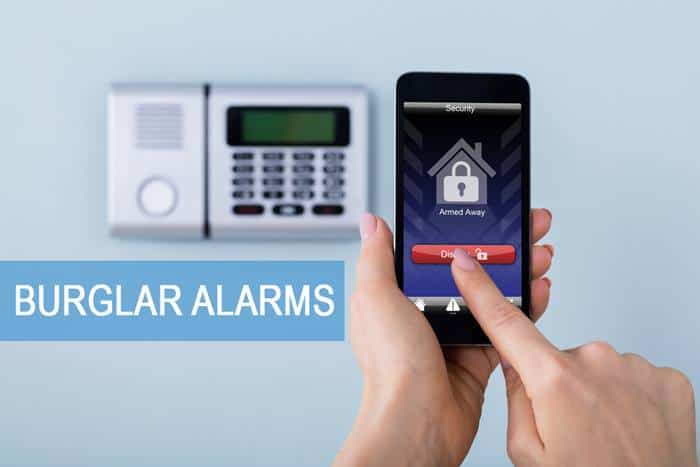These days, burglar alarms are a standard feature in any good security system, preventing break-ins at homes, companies, and other buildings.
Yet, many laypeople lack an understanding of the underlying technology of these gadgets. In this article, we’ll examine the inner workings of burglar alarms and the science that makes them tick.
Intruders can be detected and warned with the help of burglar alarms thanks to their usage of sensors, control panels, and various forms of communication.
The sensors play the most important role since they identify the intruder. Common sensors included in alarm systems for burglaries include:
Installed on doors and windows, door and window sensors detect when a door or window is opened or broken.
Motion detectors are infrared sensors that pick up on variations in body heat and motion in a predetermined zone.
Sensors that listen to the sound of shattering glass are installed to raise an alarm.
A fire or other emergency can be indicated by the presence of smoke or heat, which can be detected by smoke and heat detectors.
The “brain” of a burglar alarm system, the control panel receives a signal from each sensor when an intruder is detected.
The sensor data is sent to the control panel, which then decides whether or not to sound an alarm.
The alarm device, which may be a siren, flashing lights, or both, receives a signal from the control panel if the panel judges that an alarm is necessary.
Communication devices are an integral part of burglar alarm systems, alongside the sensors, control panel, and alarm device
These components connect the burglar alarm to either a central monitoring station or the property owner’s mobile device. A wide variety of tools serve as means of communication, such as:
Connecting the burglar alarm to the homeowner’s phone line allows it to communicate with the central monitoring station.
Some burglar alarms can send notifications directly to the owner’s smartphone over a cellular network.
Connecting a burglar alarm to a Wi-Fi network enables it to communicate with a central monitoring station or the owner’s smartphone.
To make the best decision for your needs, you must have a firm grasp of how burglar alarms function.
Take into account the sensors, the features of the control panel, and the devices for communicating with the monitoring center when making your burglar alarm selection.
Finding and installing the perfect security system for your home is easier with the assistance of a professional firm.
Intruders are detected, and individuals are notified via a network of interconnected sensors, control panels, and communication devices.
It is important for homeowners to understand how burglar alarms function so that they may make educated judgments when shopping for a system.
Intruder detection is the only use for burglar alarms. They can also work in tandem with other security measures, such as video surveillance and smoke detectors.
When an alarm system detects an intruder, for instance, it can activate the CCTV cameras to begin recording, producing evidence that can be used by law enforcement authorities.
False alarm prevention is another crucial feature of burglar alarm systems.
There are many potential sources of false alarms, including animals, the weather, and bugs.
Today’s burglar alarms are equipped with cutting-edge technology that can distinguish between a false alarm and a real one.
Smart home integration is a cutting-edge feature of modern burglar alarm systems
With smart home integration, homeowners can manage their burglar alarm system and other home protection and convenience systems from a single mobile device.
This allows home and business owners to control their security alarms from afar, keep tabs on their premises from any location, and get instant notifications of any changes.
Homeowners can also automate their security systems with the help of smart home integration.
The alarm can be programmed to go off when the occupants leave and reactivate when they return.
Property owners benefit from this degree of automation because they don’t have to manually arm and disarm the security system.
Summary
In conclusion, burglar alarms are an essential part of today’s security systems, preventing theft and burglary from occurring in homes, companies, and other locations.
Burglar alarms are becoming more user-friendly and convenient than ever before because of recent developments in smart home connectivity.
Knowing the inner workings of burglar alarms and the technology that drives them can help property owners pick the best system for their needs.
Learn more about Home Security
